- About us»
- Net income calculator»
- Population aging»
-
- Least developed regions»
-
- Average wage
- Material need benefits
- Meal allowance
- Counties of Slovakia
- Inflation
- Living and Subsistence Minimum
- Unemployment of Czechia and Slovakia
- NACE Classification
-
- Life expectancy
- Gender differences
- Youth unemployment and NEET
- Minimum wage in EU
- Unemployment rates of different age groups
- Share of salaries on GDP
- Long term unemployment
- Percentage of employees ususally working at nights
- Employment rate
- NEET
- Unemployment rate
-
- Bratislava and surroundings
- Kopanice
- Danube river
- lower Vah river
- middle Vár river
- upper Nitra river
- lower Nitra river
- Mining cities
- Kysuce a Orava
- upper Vah river - Liptov
- Spiš cities
- upper Hron river
- Juhoslovenská kotlina
- Košice fold and Torysa river
- upper Zemplín
- lower Zemplín
- EU regions
- NUTS3 regions of Slovakia
- LAU1 dataset
-
- Projects and activities
- Inclusive growth»
- Good work
- Project SKRS
- Social system – reality and vision
-
- Education of unemployed
- Young unemployed not taking part in education
- Proposal to change the system of education funding
- Library
- News»
- Contact
Latvia – LV00
EU regions: Latvia > Latvia > Latvia
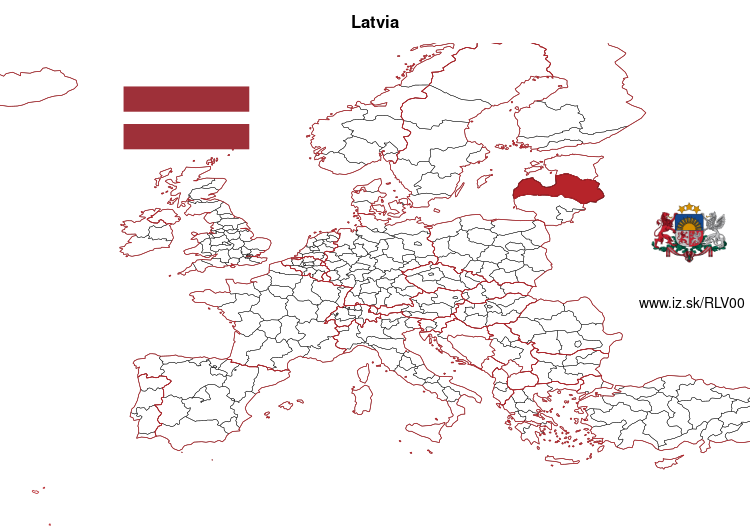
| Indicator | Period | Value |
|---|---|---|
| Life long learning | ||
| life long learning participation | 2024 | 11 |
| Part time jobs and flexible employment | ||
| percentage of part time workers | 2024 | 7.65 |
| percentage of part time workers, men | 2024 | 5.19 |
| percentage of part time workers, women | 2024 | 10.02 |
| Gender differences | ||
| gender gap in employment rate | 2024 | 96.82 |
| gender gap in unemployment rate | 2024 | 72.5 |
| Graduates and young people | ||
| unemployment rate of youth with elementary education | 2024 | 19 |
| NEET | 2024 | 9 |
| Gross domestic product | ||
| GDP per capita in PPS of EU average | 2023 | 70 |
| Employment | ||
| employment rate | 2024 | 71.2 |
Latvia slovensky: LV00
Subregions: Kurzeme Region, Latgale Region, Riga, Pierīga statistical region, Vidzeme Region, Zemgale Region
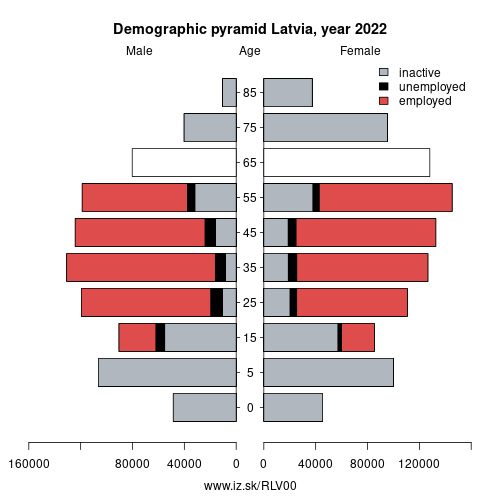
Unemployment
| Indicator | Period | Value |
|---|---|---|
| Unemployment | ||
| unemployment rate | 2024 | 7.3 |
| youth unemployment rate | 2024 | 13.6 |
| Long term unemployment | ||
| long term unemployment | 2024 | 2.2 |
| share of long term unemployed | 2024 | 32.1 |
Demographics
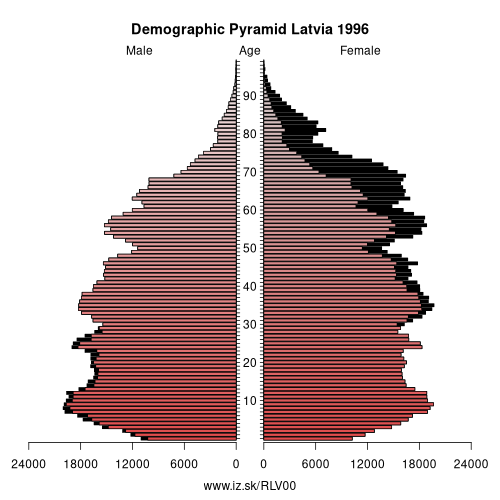
| Indicator | Period | Value |
|---|---|---|
| Demographics | ||
| number of inhabitants | 2024 | 1 871 882 |
| population density | 2023 | 30.2 |
| old-age dependency ratio | 2024 | 33.9 |
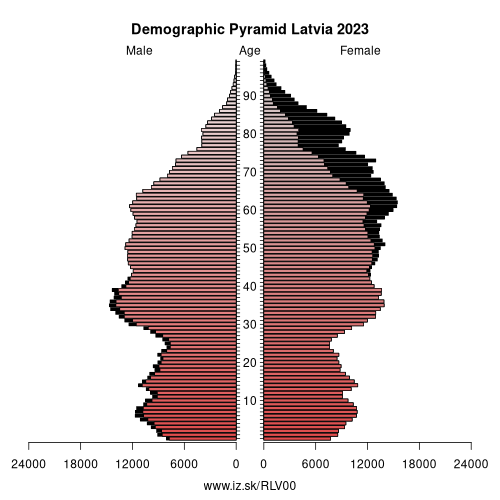
Employment by sectors, Latvia
| NACE r2 | % | NACE r2 | % | ||
|---|---|---|---|---|---|
| A | 61 | 7% | B-E | 128.4 | 15% |
| F | 65.2 | 7% | G-I | 220 | 25% |
| J | 44.2 | 5% | K | 18.2 | 2% |
| L | 18.8 | 2% | M_N | 62.7 | 7% |
| NRP | 2.3 | 0% | O-Q | 213.8 | 24% |
| R-U | 48.9 | 6% | TOTAL | 883.6 | 100% |
Data for the period year 2024. Source of the data is Eurostat, table [lfst_r_lfe2en2].
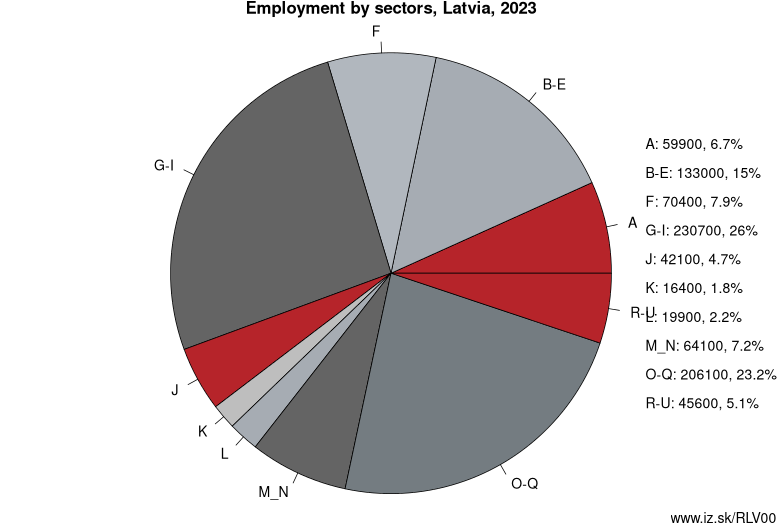
From Wikipedia :
Latvia ( or (listen); Latvian: Latvija [ˈlatvija]), officially known as the Republic of Latvia (Latvian: Latvijas Republika), is a country in the Baltic region of Northern Europe. It is one of the Baltic states; and is bordered by Estonia to the north, Lithuania to the south, Russia to the east, Belarus to the southeast, and shares a maritime border with Sweden to the west. Latvia covers an area of 64,589 km2 (24,938 sq mi), with a population of 1.9 million. The country has a temperate seasonal climate. Its capital and largest city is Riga. Latvians belong to the ethno-linguistic group of the Balts; and speak Latvian, one of the only two surviving Baltic languages. Russians are a prominent minority in the country, at some 24 % of the population.After centuries of German, Swedish, Polish-Lithuanian and Russian rule, which was mainly executed by the Baltic German aristocracy, the Republic of Latvia was established on 18 November 1918 when it broke away from the German Empire and declared independence in the aftermath of World War I. However, by the 1930s the country became increasingly autocratic after the coup in 1934 establishing an authoritarian regime under Kārlis Ulmanis. The country's de facto independence was interrupted at the outset of World War II, beginning with Latvia's forcible incorporation into the Soviet Union, followed by the invasion and occupation by Nazi Germany in 1941, and the re-occupation by the Soviets in 1944 to form the Latvian SSR for the next 45 years. The peaceful Singing Revolution started in 1987, and ended with the restoring of de facto independence on 21 August 1991.
Neighbours: Central and Western Lithuania region, Estonia
Subregions: Kurzeme Region, Latgale Region, Riga, Pierīga statistical region, Vidzeme Region, Zemgale Region
Suggested citation: Michal Páleník: Europe and its regions in numbers - Latvia – LV00, IZ Bratislava, retrieved from: https://www.iz.sk/PLV00, ISBN: 978-80-970204-9-1, DOI:10.5281/zenodo.10200164

 Share
Share Facebook
Facebook Twitter
Twitter News
News